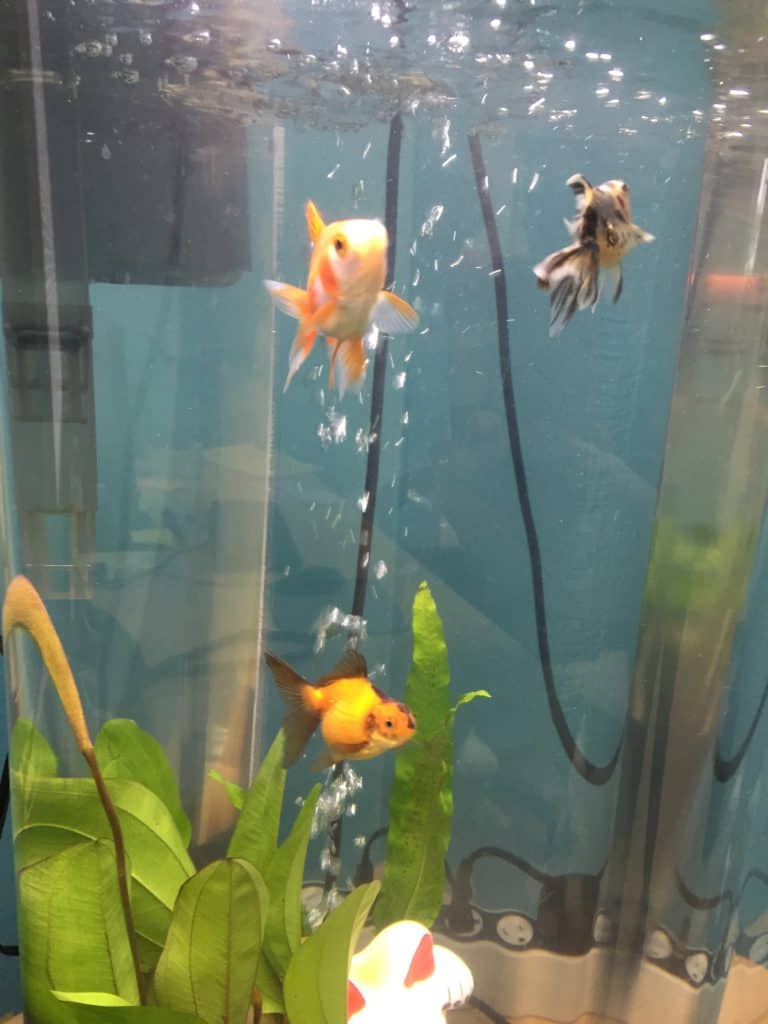Breeding goldfish can be a fun endeavor for any fish keeper. Before you start breeding your goldfish, plan ahead to make sure your fish will be healthy and strong. Read on to learn how to breed goldfish.
Are you ready for more goldfish?
Remember, goldfish are messy critters and require lots of room, starting at 20 gallons and up to 75 to 100 gallons PER FISH! If you are not planning on keeping your offspring, have a set plan in place for rehoming or selling off juveniles. Don’t just breed your fish because you can! Have a set plan in place for any offspring so you do not overwhelm your system.
Are you trying for a certain variety of goldfish?
With all the fancy varieties of goldfish out there, some cross breeding will result in a wide variation in offspring. Unless you are starting with broodstock (Mom & Dad) with a known lineage, you may be surprised at the outcome. Cross breeding a ranchu with an oranda will yield a few fish as expected, and many surprises.
Inbreeding can occur in any fish species with offspring that are crossed with themselves over many generations. Inbreeding results in distinctive external characteristics, as seen with specialty “designer” fishes, in addition to decreased survival rates, decreased life span and immune deficiencies. Mixing genetic populations is the best method to keep inbreeding out of your lineage.
Goldfish Spawning Tactics
In the overall breeding scheme, goldfish are prolific spawners with low survival rates. They have evolved to make LOTS of eggs, but not many will survive until adulthood, and that’s just how they work. Do not focus on 100% survival rate; you will not get there.
Goldfish spawn using broadcast spawning. This means that reproductive products, eggs and sperm, are spread all around and not deposited in a clutch or nest. This can be a very messy process, but it’s just their evolutionary technique. Be ready to do a heavy, but delicate, water change following spawning.
How to Breed Goldfish Step-By-Step
Step 1: Pick your broodstock (Mom & Dad)
Again, if you are going for a particular variety of fancy goldfish, you will be surprised by the end result. Do not expect physical characteristics and especially colorations to be the majority of your offspring. Avoid crossing related fish if possible in order to limit inbreeding. Make sure you have one male and one female before you start.
Step 2: Get your fish in the mood
Inducing fish to spawn is no guaranteed process, but there is a lot you can do to set up your fish for success.
Pack on the calories
It takes energy and resources to breed, so for a few weeks to months prior to spawning, feed a higher protein and fat diet than they usually receive. This can be their normal diet augmented with meaty treats such as mysis shrimp and blood worms, or switch to a higher protein food altogether.
Slowly raise the water temp
In order to mimic springtime spawning, start to slowly bring your tank water temperature up into the high 70s and NO HIGHER. If you are able, increase the light period as well.
Add some leafy bits
Goldfish love laying eggs in plant roots, so when everything is ready to get going, add some bushy plants (live or fake) or a spawning brush. The female will direct her eggs onto the roots and the male will follow behind to fertilize them.
Step 3: Save your eggs
After spawning, your goldfish will likely act a little “off,” having spent considerable energy in the spawning process. Some will start eating all the newly produced eggs. If you want to save your future offspring, move Mom and Dad back to their main tank, or move the plants or brushes to a new tank.
Baby Goldfish Care
After the spawning process, your fertilized eggs will hatch in a few days. Even though they will still have their egg sac attached for a few days to a week, it is critical to maintain good water chemistry and feed them appropriately. Baby fry have higher fat and protein requirements for proper development. As they grow, do not be surprised if you lose lots of fry. Again, this is just how goldfish have evolved to survive. Once they are an inch long, start dividing them up into larger tanks so they have room to thrive. Here are some great resources for setting up new goldfish systems for success.

